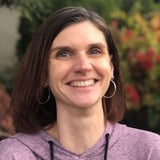Summary
Did you know that the terms "bureaucracy" and "information worker" were both invented by sociologists, long before either thing existed? Did you know that the 2008 crash was accurately predicted by an anthropologist? Many people don't realize that social research drives robust foresight. This is the kind of value even a very junior UX researcher can contribute. In this talk, Sam Ladner will describe how researchers can sift and track weak signals, how to create trend reports, and how to predict areas of change.
Key Insights
-
•
Strategic foresight requires a clear point of view and confidence to influence strategy and gain a seat at the table.
-
•
Weak signals, not just obvious tech breakthroughs, often reveal deeper social and organizational changes.
-
•
Max Weber identified bureaucracy's rise by observing the shift from irregular slips of paper to standardized filing systems.
-
•
Combining social, technological, economic, environmental, and political dimensions (STEEP) leads to richer foresight insights.
-
•
WEIRD (Western, Educated, Industrialized, Rich, Democratic) biases limit research applicability, so diversity in perspectives is crucial.
-
•
Foresight frameworks like scanning, interpretation, analysis, imagination, and strategy formulation help organize foresight work practically.
-
•
Backcasting, imagining a future and working backward to determine steps, can complement forecasting effectively.
-
•
Rigor in foresight is about justifying choices and trade-offs, not strictly following the scientific method.
-
•
Early spotting of trends, like the Zoom example in 2014, may seem premature but builds valuable knowledge over time.
-
•
Jillian Tett’s multidisciplinary analysis predicted the 2008 financial crash by integrating cultural tolerance for risk with tech innovation and finance trends.
Notable Quotes
"This talk is more than anything else about confidence: confidence to lead, confidence to predict, confidence to have a seat at the table."
"People felt whiplash from immense change that seemed to arrive nonstop in the 1890s."
"The mundane object of paper, when standardized, signaled sweeping social and bureaucratic change."
"The boss’s son was no longer the default backup boss once rules were written down and accessible."
"In many tech companies, trend hunting focusing only on tech misses social, economic, and political changes that matter."
"The key difference in foresight work is interpretation–making sense of what you’re scanning."
"Rigor is about explaining why you made trade-offs, not about the scientific method."
"Sometimes you’re too early. Don’t fear it. Keep your powder dry and your trends."
"Ask yourself who is not included in this future and how your own perspective is projecting bias."
"Using social, technological, economic, environmental, and political changes together lets you predict phenomena, like the 2008 crash."
Or choose a question:
















More Videos

"I have to triangulate socially because Yorkshire folks are quite reserved; they won't openly admit issues."
Adam Cutler Karen Pascoe Ian Swinson Susan WorthmanDiscussion
June 8, 2016

"If you’re doing a lot of work that’s not in your job description, you might actually be doing leadership."
Peter MerholzThe Trials and Tribulations of Directors of UX (Videoconference)
July 13, 2023

"Human biases are the real problem behind algorithmic bias, not the algorithms themselves."
Lisa WelchmanCleaning Up Our Mess: Digital Governance for Designers
June 14, 2018

"The time for action is now, and it must be collaborative."
Vincent BrathwaiteOpener: Past, Present, and Future—Closing the Racial Divide in Design Teams
October 22, 2020

"It matters what you build, but it matters more if you learn."
Brenna FallonLearning Over Outcomes
October 24, 2019

"Never be afraid to get into good trouble; start by asking why."
Tricia WangSpatial Collapse: Designing for Emergent Culture
January 8, 2024

"We aimed for research that is actionable, not just insightful or pretty to look at."
Edgar Anzaldua MorenoUsing Research to Determine Unique Value Proposition
March 11, 2021
"Our brains are terrible at operating only on one type of information, whether object-oriented or context-oriented."
Designing Systems at Scale
November 7, 2018

"Randomization is magic — it evenly distributes confounds so the only difference affecting results is your change."
Erin WeigelGet Your Whole Team Testing to Design for Impact
July 24, 2024
















